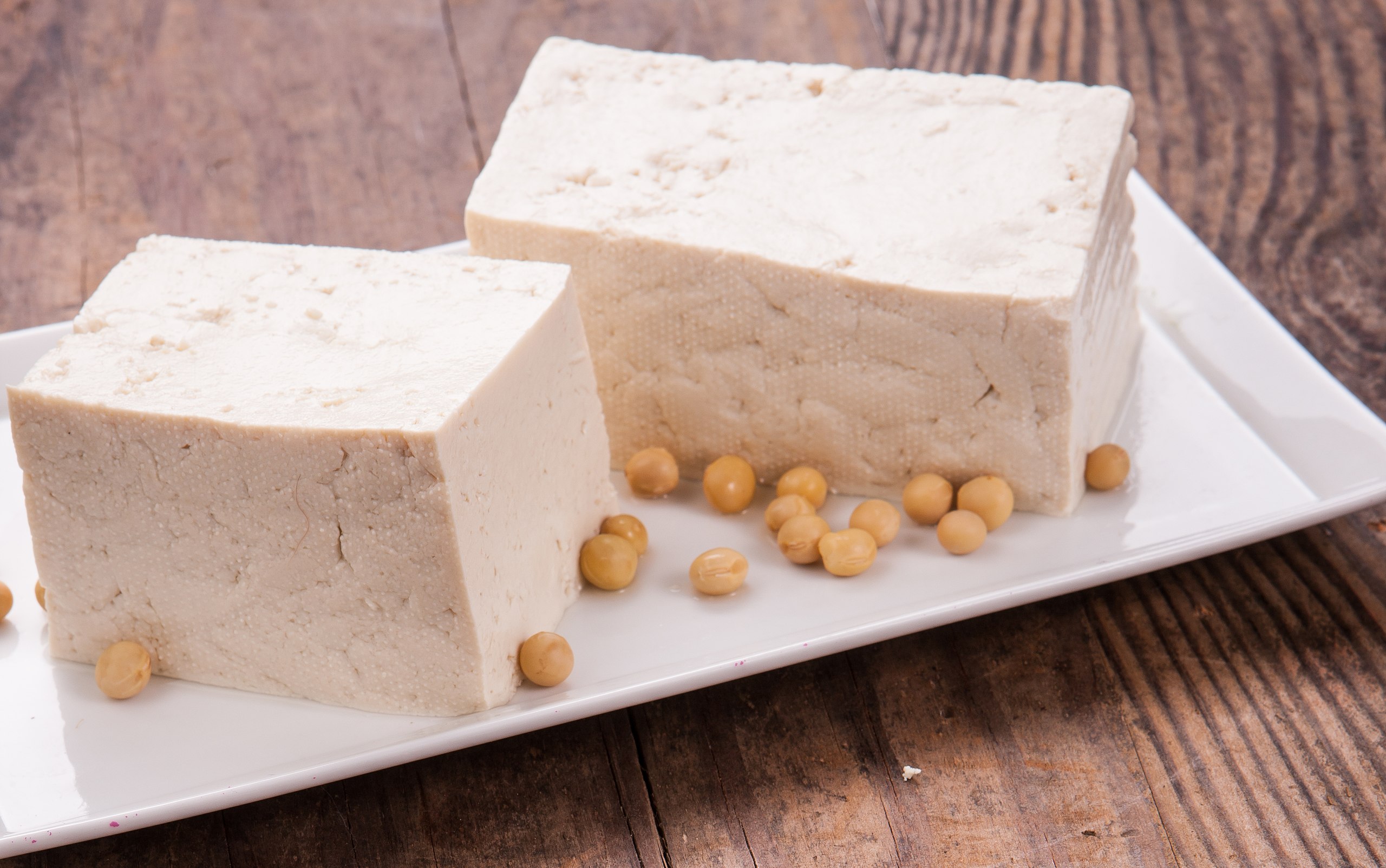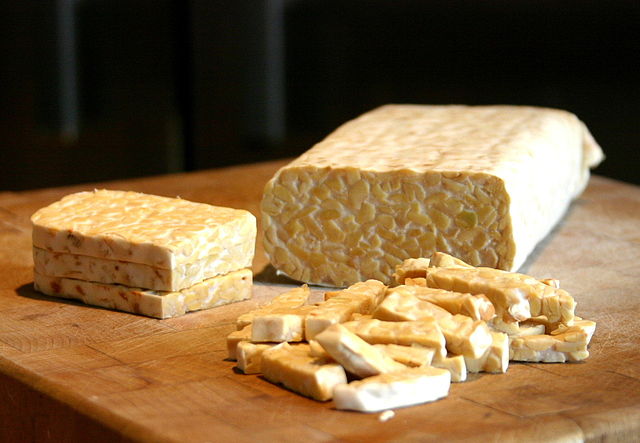Difference Between Tofu and Tempeh
Whether you are a vegetarian or a savory meat lover, a meatless diet can come in handy every once in a while. One of the most common alternatives to meat, (which provides ample protein), is soy. There are several soy products, rich in flavor and taste, that have been consumed by humans for centuries especially within Asian countries.
One of the common foods derived from soy is tofu. Tofu also referred to as bean curd, is highly nutritious and is available in soft and hard varieties. Tempeh is another less common by-product from soybeans which is available in firmer varieties and is mostly used in burger patties.
Tofu and Tempeh are both great meat alternatives; however, health experts advise consumers to ensure the product is manufactured from non-GMO soybeans. Most of the soybeans in the world today come from the US, and a very high percentage of then are Genetically Modified. There may be no direct link between health issues and GMO products at the moment, but it’s better to be safe than sorry.

What is Tofu?
Tofu is a food made through a process similar to that of cheese. In fact, tofu is identical in appearance and texture to most cheese varieties. Pressing condensed soy milk into blocks with a coagulant makes tofu. Rumor has it that tofu was first created by accident in China, about 2000 years ago, when a batch of soy milk was mixed with remnants of sea salt extraction. Since then, the food has become a delicacy in almost all parts of the world and is served in most Eastern restaurants globally. Tofu is commonly used in salads, tacos, smoothies, pancakes, on toast, rolls, stir-fry mixes, curries, soups and sandwiches.
Tofu contains a bunch of nutrients. In addition to having several macronutrients required in the daily intake, it also includes anti-nutrients like trypsin inhibitors, lectins and phytates. A 100 gram serving of tofu contains the following:
8 grams of protein
2 grams of carbohydrates
1 gram of fibre
31% of the RDI of manganese
20% of the RDI of calcium
14% of the RDI of selenium
12% of the RDI of phosphorus
11% of the RDI of copper
9% of the RDI of iron and magnesium
6% of the RDI of zinc

What is Tempeh?
Tempeh, similar to tofu, is another product from soybeans. It is made through fermentation of soybeans into chewy blocks. Despite tempeh being originally made from soybeans, you can use any type of beans including kidney beans to make the chunky blocks. Tempeh is originally from Indonesia. This soybean product has been a staple meat replacement option since the 12th century. Tempeh can be used in several ways, e.g. in tacos, burgers, salads or even a vegan BBQ.
This ancient Asian delicacy also has high nutritional value; a 100 grams serving contains:
38% of the RDI of protein (approximately 19g)
20% of the RDI of magnesium
16% of the RDI of fat
15% of the RDI of iron
11% of RDI of potassium
11% of the RDI of calcium
10% of the RDI of vitamin B6
3% of the RDI carbohydrates
1% of the RDI of Vitamin B12
Difference Between Tofu and Tempeh
1) Manufacturing Process for Tofu and Tempeh
Curdling soy milk with a coagulant makes tofu. Tempeh is made through the fermentation of soybeans into solid blocks.
2) Packaging
Tofu blocks can be packaged in five different ways: soft mostly used for soups, silken (used mainly in creamy dishes), firm, extra-firm (primarily used in stir-fries or for deep frying), and finally in water to ensure it has ample moisture. Tempeh is packaged in eight-inch rectangular pieces.
3) Appearance of Tofu and Tempeh
Tofu is mostly white or cream. Tempeh is usually brown, and there is the possibility of seeing the actual beans used in the making process, depending on the recipe used.
4) Consistency of Tofu Vs. Tempeh
Tofu is soft and spongy; cheese-like. Temper is chewy and very firm.
5) Taste
Tofu has no flavor; it almost has no taste at all on its own. As a result, it is mostly prepared in spicy dishes to absorb flavours. Tempeh has an earthy and sweet flavour.
6) Calories in Tofu and Tempeh
Tofu has fewer calories, as a 100-gram serving contains approximately 117 calories. Tempeh, on the other hand, has slightly more calories; a 100-gram serving contains 193 calories.
7) Protein Content in Tofu and Tempeh
Tempeh has more protein content as a 100-gram serving contains 19 grams of protein which is 38% of the required daily intake. Tofu contains slightly less protein, as 100-gram serving contains 8 grams of protein which is 16% of the necessary daily intake.
8) Popularity
Tofu is much more common than tempeh. You have probably heard or enjoyed a meal made of tofu but not tempeh as it is less produced.
Tofu vs Tempeh

Summary of Tofu Vs. Tempeh
- Tofu and tempeh are both products of soybeans.
- Tofu undergoes a lot more processing than tempeh.
- Curdling soy milk with a coagulant manufactures tofu.
- Fermenting soybeans into chunky pieces makes tempeh.
- Tofu is soft and has no taste while tempeh is firm and has an earthy-sweet taste.
- Tempeh has a lot more protein; slightly more than double that present in tofu.
- Tofu is more common to find than tempeh.
- Difference Between S Corp and C Corp - September 9, 2018
- Difference Between Terrace and Balcony - September 9, 2018
- Difference Between Anabaptists and Evangelicals - August 31, 2018
Search DifferenceBetween.net :
Leave a Response
References :
[0]Image credit: https://upload.wikimedia.org/wikipedia/commons/thumb/d/df/Sliced_tempeh.jpg/640px-Sliced_tempeh.jpg
[1]Image credit: https://en.wikipedia.org/wiki/Tofu#/media/File:Tofu_4.jpg
[2]Shurtleff, W., & Aoyagi, A. (2011). History of Tempeh and Tempeh Products (1815-2011): Extensively Annotated Bibliography and Sourcebook. Soyinfo Center.
[3]Sass, L. (1998). The New Soy Cookbook: Tempting Recipes for Tofu, Tempeh, Soybeans, and Soymilk. Chronicle Books.
[4]Greenberg, P. (1998). The Whole Soy Cookbook: 175 Delicious, Nutritious, Easy-to-prepare Recipes Featuring Tofu, Tempeh, and Various Forms of Nature’s Healthiest Bean. Three Rivers Press.
